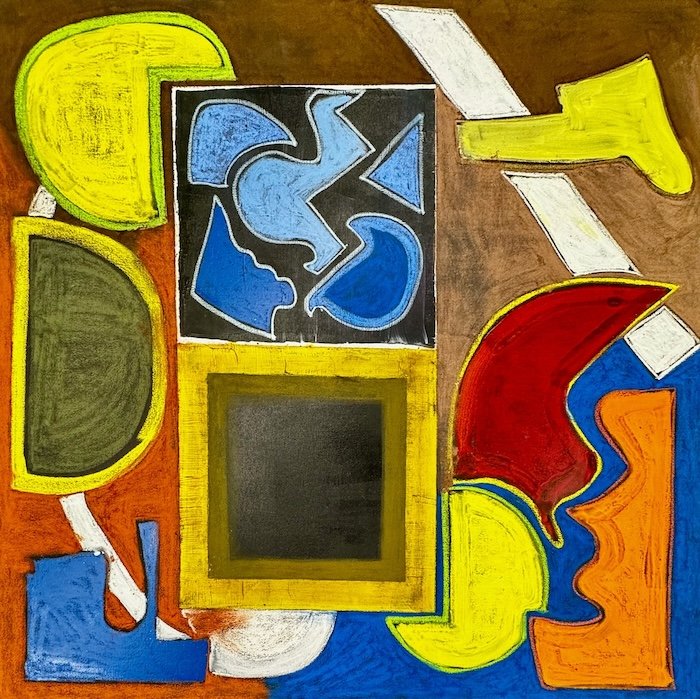Why Abstract Art Speaks Where Words Fail
Why choose abstract art? Because sometimes, the most powerful experiences live beyond words. Join me in exploring how abstraction invites us into feeling, presence, and connection.
Abstract Still Life, 4ft x 4ft, Playful Abstraction, 2024
There are moments in life when words simply cannot reach. Grief, joy, awe, longing — these emotions rise up, raw and vivid, but they defy neat description. We search for language and come up short. This is where abstract art steps in.
For me, abstraction is not just a visual style; it is a language of feeling, sensation, and presence. It offers a space where we can dwell with emotions and perceptions too vast, too subtle, or too layered to pin down with words. It lets us experience, rather than explain.
Unlike representational art, which often depicts recognizable subjects — a landscape, a figure, a still life — abstract art removes the anchor of literal meaning. It invites us into a space of ambiguity, where we are free to feel, interpret, and engage without the pressure of identifying or labeling. A single brushstroke might carry urgency or softness. A field of color might resonate like music, stirring joy, melancholy, or wonder. Without the constraints of representation, abstraction offers direct access to the subconscious, bypassing rational filters and speaking straight to the body, the senses, the heart.
Many people approach abstract art with the question: What does it mean? But I believe the more fruitful question is: How does it feel? Abstraction invites us to feel before we understand. It invites us to slow down, to notice the pull of a line, the vibration of a hue, the weight of a texture. It offers an encounter — one shaped not by fixed meaning, but by unfolding presence.
In my own practice, I see abstraction as a mirror of life itself. Life is rarely tidy or easily explained. It is shifting, layered, surprising. Abstract art meets us in that space, reminding us that meaning is often emergent, born in the moment, shaped by who we are and how we show up.
Abstraction’s power lies in its universality. A person from one culture may read a landscape painting differently from someone in another. But abstraction — pure form, color, rhythm — reaches across language and context. It resonates with something human, something elemental. This is why, when I stand in front of an abstract work, I feel I am stepping into a shared space — one where I can bring my own memories, emotions, and questions. The work does not dictate; it invites.
In my journey from mathematics and technology into the world of art, I have always been drawn to the spaces where precision meets openness, where structure meets improvisation. Abstraction offers this edge — a place to play, to explore, to transgress boundaries. It allows me to work not toward a fixed image, but toward a dynamic, evolving inquiry. It allows me to create works that are not static statements, but living conversations, waiting for the viewer to enter.
Ultimately, I choose abstraction because it speaks where words fail — and because it offers, again and again, the profound gift of feeling without explanation.
You can view the full Playful Abstraction Collection here.

